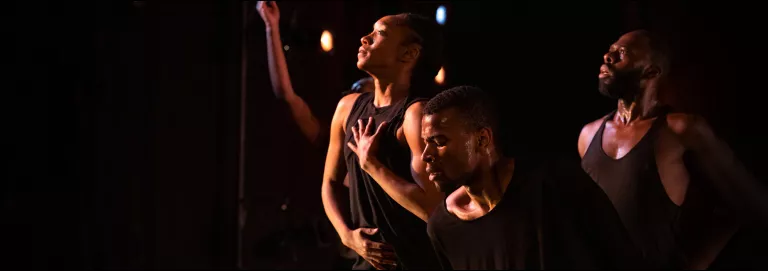
Walker Art Center and Northrop Present
DIANNE McINTYRE Group
In the Same Tongue
Past event
Oct 05, 2023
Oct 06, 2023
Oct 07, 2023
Photo © Paula Lobo.
In the world premiere of this vibrant movement, sound, and language based-work, dance legend and choreographer Dianne McIntyre unites a vigorous company of dancers and musicians to explore how dance and music “speak” to each other. With original music by celebrated composer Diedre Murray, it reveals how language creates worlds of beauty, alienation, harmony, tension, or peace. Dynamic vignettes ignite the stage, including McIntyre’s autobiographical stories with “the music”—such as the musical influence of the Black Arts Movement—and feature the poetry of Obie-winning playwright Ntozake Shange.
"Dianne McIntyre is the queen of dance collaborations and improvisations."—Star Tribune
The content below derives from the Northrop Across Campus Program that supports Northrop's mission towards intersections between performing arts and education for the benefit of all participants now and for generations to come.
Find ways to make thematic connections to these suggested topics:
Take a deeper dive with these resources that provide additional information about the performers, the history of the artform, and the artistic process.
Links:
Start a conversation about the performance, or encourage reflection, using these questions as inspiration.
Modern dance powerhouse and cultural investigator Dianne McIntyre will premiere her new work, In the Same Tongue, at The Walker Art Center in October. The work explores a conversation between dance and music, and features innovative composer, musician and curator Deidre Murray, and poetry by American playwright and poet Ntozake Shange. In a video about her process, McIntyre says, “We have the language in actual words, we have the language of the music and we have the language of the dance.”
McIntyre has been a dynamo in the dance world for over five decades. She has worked as a performer and a choreographer in concert dance, theater, film, and television. In 1972, at the young age of 25, she founded her dance/music company Sounds in Motion in New York. A couple of years later the company established its own studio in Harlem. In an interview with TimeOut, she spoke about dancing in ‘70s New York, “It was fantastic… It was a very high time for dance and for the arts in general.”
McIntyre is committed to strong engagement with the local community whenever her work is being presented, and local performers are incorporated into the production at each tour site.
In an interview with Dance/USA, McIntyre talks about the first time she posted an audition notice. She mentions the advice of a mentor, “I’ll never forget what she said, ‘People will come because they’re hungry to dance.’ And that has not changed.’”
Support for the commission and the development of In the Same Tongue was provided by: Walker Art Center, Northrop, Baryshnikov Arts Center, Dance Place/Alan M. Kriegsman Creative Residency, Duke University, Maggie Allesee National Center for Choreography, Princeton University, Apollo Theater, ArtsEmerson.